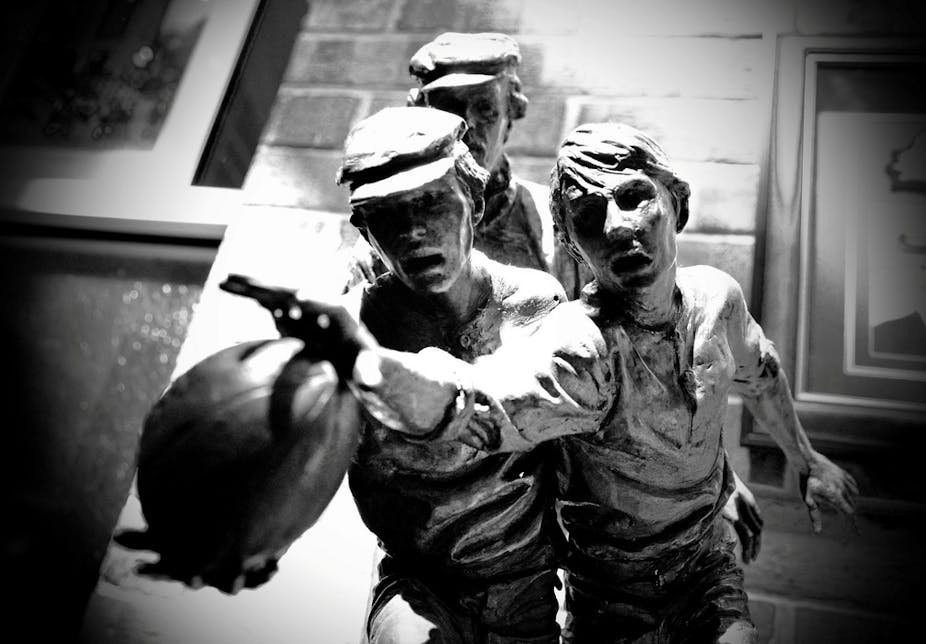The focus of the Olympic Games is quite rightly on athletes who compete in contests where medals are awarded. However, many obscure events, for which medals were not awarded, have been a feature of the Games for nearly a century.
These so-called demonstration sports were often low-profile affairs, but nonetheless offer worthwhile insights into the development of the Games and the overall philosophy that underpins them.
Before 1992, the International Olympic Committee (IOC) allowed host cities to showcase certain local sports as exhibition events. Since the Paris Olympiad in 1900, numerous events have been contested at the Olympic summer and winter games as demonstration sports.
Usually, these sports were either being considered for inclusion in the main Olympic Games program, or were indigenous to the host nation. While the latter events might be an important part of the sporting traditions of host nations, they usually did not meet the IOC’s strict criteria, which state medal sports must be played internationally by a significant body of athletes and have a “positive image”.
The 1992 Barcelona Games hosted the final series of “official” demonstration sports, based on the IOC’s edict that the program was becoming too crowded. However, an exception was made at the 2008 Beijing Games when an exhibition of wushu – a full-contact sport based on martial arts – was provided.
In the 92 years demonstration sports were included in the Olympics, an array of sports were exhibited: badminton, bandy, basketball, bicycle polo, bowling, budo, canne de combat, canoeing and kayaking, cricket, croquet, curling, dogsled racing, football (American and Australian Rules), freestyle skiing, gliding, glima, pärk, jeu de paume, judo, kaatsen, kendo, korfball, kyudo, lacrosse, military ski patrol, pelota basque, pesapallo, roller hockey, savate, short-track speed skating, ski-joring, speed skating/skiing, sumo, taekwondo, tennis, water skiing, and winter pentathlon.
Several of these events took place during more than one Olympiad, such as American and Finnish baseball (1912, 1936, 1952, 1956 and 1964), and lacrosse (1928, 1932 and 1948).
A number of these sports have been subsequently added to the Olympic program (including badminton, basketball, canoeing/kayaking, judo, taekwondo, and tennis) but the majority have remained nothing more than a sideshow.
For instance, pelota basque, an ancient handball game adopted by the Spanish/French Basque people in the 13th and 14th centuries, is prevalent in South America, the United States and a number of European nations, and was a demonstration sport at three Olympic Games (1924, 1968, 1992). It was never elevated to the main program.
The various football codes have always been a popular demonstration option, with a game of American football featured at the 1932 Los Angeles Games.
There was some ill-feeling among other nations when Australia selected Australian Rules football as a demonstration sport (along with baseball) at the 1956 Olympic Games. Before the Melbourne Olympiad, the soccer schedule had been decimated by the withdrawal of five nations, undermining plans to showcase Association football in the Australasian region.
The final of the men’s soccer (women’s soccer wasn’t added to the Olympics until 1996) between Yugoslavia and the eventual winner, the USSR, was scheduled on a Saturday as the culminating event of the Games. But it was the Australian Rules football match on the Friday afternoon preceding the soccer final that gained considerable attention.
The Duke of Edinburgh altered his busy Olympic schedule to watch the game, and it was claimed that “600 international Pressmen” were also on hand to witness the contest between a combined team of amateur players selected from the Victorian Football League and the Victorian Football Association, and the Victorian Amateur Football Association. Both teams featured Olympic rings on their jumpers, and the game was won by the amateur association team.
Despite their sometimes inconsequential nature, the sideshow events that constitute demonstration sports are, in fact, a worthwhile window into Olympic politics. Host nations had some degree of autonomy in staging such activities, and as such, there was an opportunity for organising committees to stamp something of their nation’s character on an increasingly globalised sporting event.

